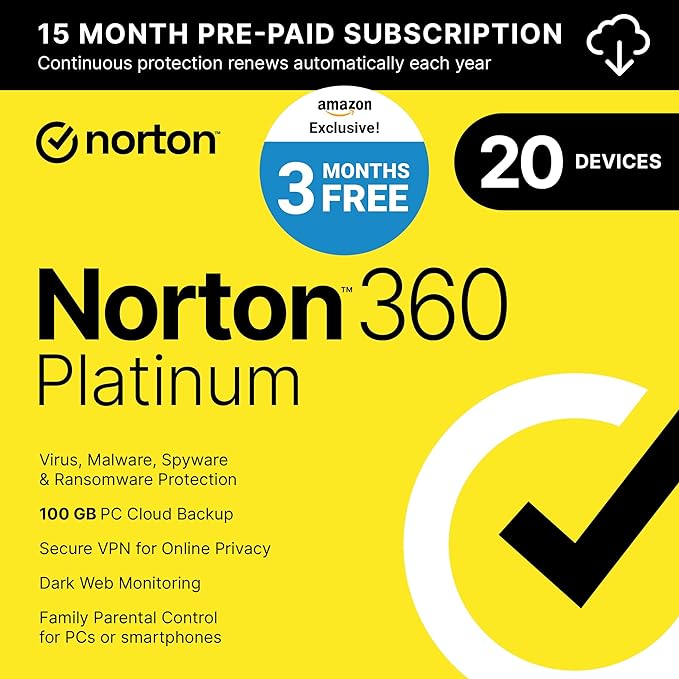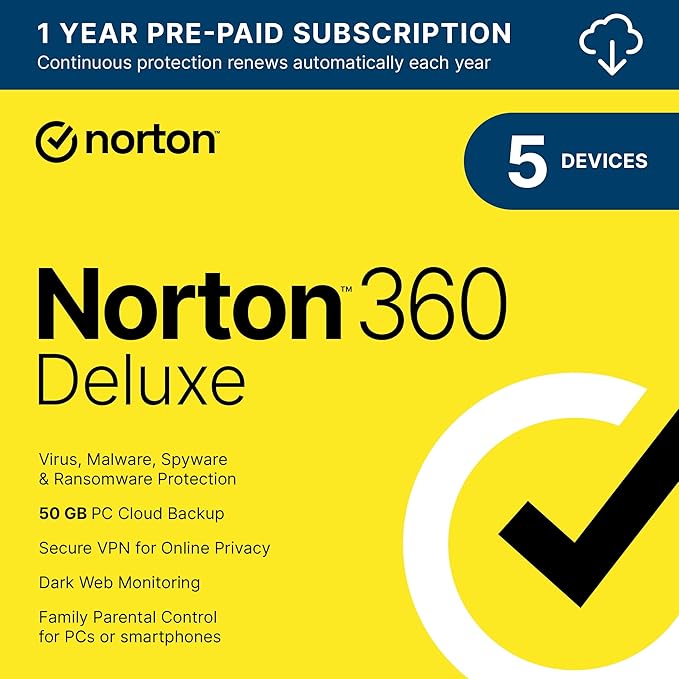


Having Trouble with Viruses?
Struggling with Cybersecurity Issues? Look No Further! Premium Norton 360 Sales and Skilled Support – Your Trusted Destination for All Cybersecurity Solutions.
- Advanced Antivirus Protection for Home & Business
- Easy to Install & Setup
- Fast & Reliable Sales & Support Services
- Call Toll Free Or Chat With a Live Expert
- +1 (888) 959-4810

HAVE A QUESTION? CALL TOLL FREE OR CHAT +1 (888) 959-4810
1. Purchase and Download: Buy the antivirus software and download the installer from a trusted source.
2. Run the Installer: Double-click the downloaded file to start the installation process.
3. Accept Terms and Conditions: Review and agree to the software’s terms and conditions. 4. Choose Installation Settings: Select custom or default installation settings as needed. 5. Complete Installation: Follow the on-screen prompts to complete the installation. 6. Activate the Antivirus: Enter the product key or sign in to activate your subscription.
7. Update Virus Definitions: Ensure the antivirus is up-to-date by downloading the latest virus definitions.
8. Run an Initial Scan: Perform a full system scan to detect and remove any existing threats. 9. Configure Scheduled Scans: Set up regular automatic scans to keep your system protected. 10. Enable Real-Time Protection: Ensure real-time protection is enabled for ongoing security.
1. Check System Requirements: Ensure your system meets the minimum requirements for the antivirus software.
2. Disable Conflicting Software: Uninstall any existing antivirus or security software that might cause conflicts.
3. Verify Installer Integrity: Confirm the installer file is complete and not corrupted.
4. Run as Administrator: Right-click the installer and select “Run as Administrator.”
5. Check for OS Compatibility: Ensure the antivirus is compatible with your operating system version.
6. Temporarily Disable Firewall/Security Software: Turn off any firewall or security software that might be blocking the installation.
7. Free Up Disk Space: Ensure there is sufficient disk space for the installation.
8. Update Operating System: Make sure your OS is up-to-date with the latest patches and updates.
9. Check for Malware: Run a malware scan to ensure your system is clean before installation. 10. Use a Different Installation Method: Try using a different installation method, such as an offline installer.
11. Contact Support: Reach out to the antivirus provider’s support team for assistance if the problem persists.
Is this conversation helpful so far?
1. Download Correct Antivirus Version: Ensure you’re downloading the correct version of the antivirus for your operating system.
2. Run Installer as Admin: Right-click the installer and choose “Run as Administrator.”
3. Disable Conflicting Software: Temporarily disable any existing antivirus or security software that may interfere.
4. Remove Previous Installations: Uninstall any previous versions of the antivirus to avoid conflicts.
5. Check Task Manager: Ensure no conflicting processes are running before installing.
6. Reboot and Retry: Restart your system and attempt the installation again.
7. Install in Safe Mode: Try installing the antivirus in Safe Mode to avoid conflicts with other software.
8. Check Digital Signatures: Verify the installer is from a trusted source with proper digital signatures.
9. Use Compatibility Mode: If the installer is old, try using Compatibility Mode in Windows.
10. Check Disk Space: Ensure there’s enough available disk space for installation.
11. Verify System Requirements: Make sure your system meets all the software’s requirements.
12. Contact Antivirus Support: If issues persist, reach out to the antivirus provider’s support team for help.
1. Determine Your Security Requirements: Assess whether you need antivirus protection for
personal use, business use, or specific tasks like secure online banking or protecting multiple devices.
2. Research Antivirus Types: Understand the different types available, such as basic antivirus, internet security suites, or advanced protection packages with features like VPNs, firewalls, and parental controls.
3. Consider Compatibility and Features: Decide if you need features like real-time protection, malware removal, or protection for specific operating systems (Windows, macOS, Android, etc.).
4. Assess Protection and Performance: Look for antivirus solutions that offer high detection rates, minimal impact on system performance, and comprehensive protection against various threats.
5. Read Reviews and Compare Software: Look for reputable sources that provide unbiased reviews and compare different antivirus software based on their performance, reliability, and user feedback.
6. Set a Budget: Determine your budget range and find antivirus solutions that offer the best value for money within that range, including considering free versus paid options.
7. Consider Subscription and Renewal Costs: Take into account the cost of initial purchase and ongoing subscription or renewal fees.
8. Check for Additional Features: Consider any extra features that may be important to you, such as identity theft protection, password managers, or cloud backup.
9. Check Warranty and Customer Support: Look for antivirus solutions that come with a good
warranty and reliable customer support in case you encounter any issues.
-

Norton 360 Deluxe 2024, Antivirus software for 5 Devices with Auto Renewal – Includes VPN, PC Cloud Backup & Dark Web Monitoring [Download]
$24.99 -

Norton 360 Platinum 2024, Antivirus software for 20 Devices with Auto Renewal – 3 Months FREE – Includes VPN, PC Cloud Backup & Dark Web Monitoring [Download]
$39.99 -

Norton Utilities Ultimate – cleans and speeds up your PC, Windows PCs only [Download]
$39.99 -

Norton 360 Platinum 2024, Antivirus software for 20 Devices with Auto Renewal – 3 Months FREE – Includes VPN, PC Cloud Backup & Dark Web Monitoring [Download]
$39.99
About Us
Your Reliable Source for Antivirus
Partner with confidence. With over 5 years of dedicated expertise, we’ve built a fortress of trust and reliability, safeguarding the needs of individuals and businesses with our sales and on-site repair services. Count on us to deliver with the precision and security you’ve come to expect.
Our Mission
Our mission is to provide top-notch antivirus solutions and unparalleled repair services to meet the diverse needs of our valued customers. We are committed to delivering exceptional customer service, technical expertise, and cost-effective solutions to ensure the efficient fulfillment of your requirements.
-

Norton 360 Deluxe 2024, Antivirus software for 5 Devices with Auto Renewal – Includes VPN, PC Cloud Backup & Dark Web Monitoring [Download]
$24.99 -

Norton 360 Platinum 2024, Antivirus software for 20 Devices with Auto Renewal – 3 Months FREE – Includes VPN, PC Cloud Backup & Dark Web Monitoring [Download]
$39.99 -

Norton Utilities Ultimate – cleans and speeds up your PC, Windows PCs only [Download]
$39.99 -

Norton 360 Platinum 2024, Antivirus software for 20 Devices with Auto Renewal – 3 Months FREE – Includes VPN, PC Cloud Backup & Dark Web Monitoring [Download]
$39.99
